
Cover Illustration: detail from Ascension, (Figure
3)
Cover Design: Don Watkins
"at the behest of something deep
within"
The works in this exhibition by James Pappas -
four small and three large drawings, five "screen paintings" and two large
paintings - represent a selection of the recently completed work of an
artist who has been working professionally and exhibiting widely in North
America and abroad for nearly twenty-five years. Pappas's work, from the
early 1970s when he obtained an MFA degree from the University at Buffalo
to the present is immediately recognizable for its unique and compelling
forms, gestures, textures, tonalities, discontinuities and subversions,
but to engage the work, to enter into and experience it, it is helpful,
(though by no means essential, Pappas would point out) to know something
about the artist and his ideas and intentions.

Figure 1. "Equinox", mixed media, 30"x22"
Born in Syracuse New York, and raised in Cleveland,
Ohio and Rochester, New York, James Pappas first began his development
in High School athletics where he starred in football and won the New York
State Championship in the 100 and 200 meter track events. Comments by newspaper
writers on the exceptional ease and fluidity with which he ran not only
built confidence, but provided important associations between Pappas's
inner self and aesthetics which were nurtured in his subsequent academic
art school experiences.
Deeper and more enduring, however, has been the
impact of music, especially Jazz, on Pappas who grew up around musicians
and closely followed the developments in Jazz from the Swing era and Be
Bop to the more personal and expressionistic sounds of such masters as
John Coltrane, Charlie Parker, Thelonius Monk, Sun Ra, Cecil Taylor, Anthony
Braxton and Miles Davis. The works exhibited here have an intimate relationship
with Jazz although they are by no means an attempt to represent Jazz graphically.
Pappas's art is an expression and a synthesis of many things both external
and internal to him. Some, such as the interplay between nature and technology,
the relationships of space and time, the experience of being born in America,
are thematic. Others depend on being open to the spontaneous suggestiveness
of found objects, including the aural as well as the visual. A long commitment
to teaching "Blacks in Film" and an extensive knowledge of the history
of art are each important, as is a sense of humor. Pappas feels an affinity
with such Abstract Expressionist painters as Franz Kline, Arshile Gorky,
Cy Twombley and Sam Francis but Jazz provides the principal inspiration
and, to a certain extent, the vehicle for Pappas's work. He has internalized
the fundamental tenets of Jazz - the rhythmic understructure that supports
solo and ensemble improvisational elaborations and dissemblings of basic
tunes and chord patterns - and from individual artists such as John Coltrane,
Sun Ra and Charlie Parker he has absorbed specific innovational approaches
to the manipulation of space and time and to notions of spirituality and
joy that belong comfortably to any serious art form.
A discussion of the five works illustrated here
- the two small drawings, "Equinox" and "Ascension," the two large drawings
titled "Impression" and "Expressions" and the silk screen painting "Symphony
in Black" will reveal something of the nature of the relationships and
techniques. All of the titles of the works in this exhibition are taken
from compositions by Jazz musicians, but they should be understood as a
form of homage rather than descriptive or insight-bearing signifiers.
In his studio, Pappas approaches the pictorial
surface with the intention of working with a maximum of spontaneity, an
attitude that is fundamental to the Jazz idiom but is also central to Surrealism
and Abstract Expressionism. Hence he works quickly and confidently so as
to maximize the flow of impulse between the unconscious or semi-conscious
mind and the hand. The presence of shapes, some of which are geometric
and others vaguely recognizable from nature and technology and which recur
in Pappas's work over time, serve to establish a kind of order and as points
of focus for the viewer, but these are subverted by the slight irregularity
of their shapes, by the skewing of their positions, and by overdrawing
that blurs and dissembles their edges. During the process, Pappas watches
for the accidental emergence of a recognizable form, but whereas a surrealist
would take such a form as the point of generation for something specific
and hyper-real, like a monstrous bird, Pappas works in the opposite direction,
toward the fugitive and the transitory. A leading intention, however, is
to draw the viewer into the work and to involve him or her in a visual
experience that is equivalent to Jazz in its intensity, virtuosity, and
spontaneity.
The drawing titled "Equinox" [Figure 1] derives
its structure from six contiguous rectangles of various sizes aligned to
the framing edges of the paper, but this structure is constantly subverted
by a variety of graphic events including circles, enigmatic shapes, patches
of dense hatching, an inverted snapshot, and innumerable gestural pencil
marks. The principal events occur at the periphery of the large square
void in the pictorial center but many of them overlap the void and the
adjacent rectangles to create an ambiguity of depth. Pencil marks meander,
careen and erupt like riffs across and within this ambiguous surface. What,
the uninitiated might ask, is it all about?
 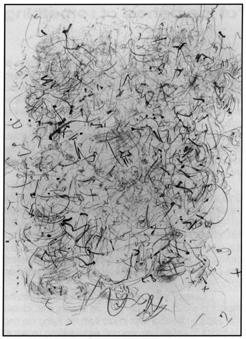
Figure 2. "Evidence", drawing, mixed media, 30"x22"
Figure 3. "Ascension", drawing, mixed media, 28"x36"
The artist's intention is not so much pictorial
in the conventional sense as it is experiential. Semi-familiar forms like
the head of a bird and the planet-like sphere in "Equinox" catch the eye
and draw the viewer into the work. Framed by their respective rectangles
these forms trail off (some leap) into other spaces and zones of intense
graphic effusion offering endless instances of discovery and opportunities
for interpretation and sometimes baffling spatial ambiguities. Pappas has
written that his works can be "read as a novel."
Similar strategies and techniques recur in "Evidence"(Figure
2) where the airiness of "Equinox" is supplanted by a more consistently
toned ground, a smaller, tilted square void and an arc of colored, target-like
circles that describe an ascending arc across the surface. In the upper
center, against a grayish ground there looms a mysterious form - is it
a bone or a bomb? - around which the rest of the forms and marks occur
in fields and patches. In the two remaining drawings in the series, "Ascension"
[Figure 3] and "Inter Stellar Space," Pappas has dispensed with the rectilinear
structural elements and de-emphasized ambiguous shapes to a point of near
invisibility in favor of a rich skein of gestural marks of various sizes,
textures and colors.
The experience here is one of immediate and total
envelopment, a spatial fabric which can be visually subsumed as a totality
at a conventional viewing distance but which rewards close scrutiny with
a fascinating assortment of provocative detail.
The three large drawings, "Criss Cross," "Expressions"
and "Impression," reverse the gestural dominance seen in "Ascension" and
feature semi-discrete, spontaneously-generated forms some of which belong
to Pappas's repertoire and others of which seem to have taken on a life
of their own as part of the process of uninhibited creation. Among these,
"Criss-Cross" is distinctive in its evocation of landscape, building and
bird, but it and "Expressions" and "Impression" should be appreciated for
the skill with which powerful formal entities and spatial relationships
remain ambiguous despite the clarity of their outlines. "Impression" [Figure
6] is, in my opinion, especially accessible because of the clear separation
of its forms, the absence of color and the confinement of marks and hatchings
within the boundaries of the forms. Within this economy of means Pappas's
subversive techniques are readily evident - the picture surface is divided
vertically and horizontally into quadrants but there is a rift between
the upper two that suggests a space beyond, a depth that is made ambiguous
by the presence of the familiar square void abutted to it. In a similar
vein, the crossing line suggests a horizon and yet it is nullified as such
by diagonal snake-like creatures whose forms cut across the "horizon."
There is a sinister spirituality in the face/mask, the serpents, the small
inverted cross on a dark ground, the truncated forms at the top and bottom
left, the cross-like form at the left edge and in the heavy linear marks
that course across the three major inter-figural voids. The iconography
of this work remains just out of reach, but it is further enriched by a
myriad of little linear marks and textures within the boundaries of the
forms.
 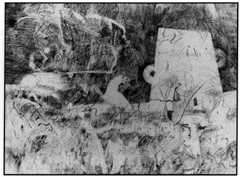
Figure 4. "Inter Stellar Space", drawing, mixed
media, 22"x30"
Figure 5. "Criss Cross", drawing, 40"x32"
"Expressions" [Figure 7] is denser and more compact,
a collage of found objects and shapes drawn together in de Kooning-esque
jumps, graffiti and patches of strong color into a single large form giving
way on the left picture edge to a loose field of marks and on the right
to a pair of roughly circular masses of the flickering pencil. Because
of its shape definition through edge control this work is experienced differently;
it is object-like and yet the sub-shapes and strong colors invite immersion
and search in their own way.
In the medium of silk screen painting, Pappas,
who was trained as a painter, is freed up from the creation of each and
every texture and event with his pencil point, to address composition broadly,
and he does this with tremendous assurance, the confidence that can only
come with time, patience and deep commitment. Thirteen years ago, when
he first began to feel the weight of the Chairmanship of the Department
of African American Studies at the University at Buffalo, Pappas's silk
screen works were characterized by strong mechanistic forms with hard edges
and solid color juxtapositions which he now believes to have been a manifestation
of the need to give a pictorial expression to the formal order and discipline
then imposed on him, an order that he could then challenge and subvert
in the work. In his work today he strives for freedom, even when it is
necessary to achieve that through hundreds of small pencil strokes and
checks. Among the five silk screen paintings shown here, "Symphony in Black"
[Figure 8] and "Meditations" are representative of the series and of the
artist's approach to this favored medium. Many of the pictorial characteristics
of the drawings are present here such as wheel-like circles, a squarish
void, and other ordering devices, but these are subsumed by a composition
that is roughly divided above and below a kind of horizon line. The lower
surface is richly black but scintillates with patches and touches of white
and ghostly indications of the wheel forms. The upper portion of the surface
consists of a few bold arcing strokes that soar upward from the ground
below. Franz Kline comes inevitably to mind, but where Kline is wholly
abstract, Pappas operates somewhere close to the familiar, though never
in a way that is merely pictorial. Such a description does not begin to
capture the quality of the surface tones and textures that Pappas is able
to produce by the manipulation of such variables as the amount of paint
applied to the surface, the pressure on the squeegee, the dryness of the
paint, and the distance that it is pulled across the surface, but it is
in those techniques that he is able to produce the densities, jumps and
voids that are equivalent to his drawn images. "Symphony in Black" is remarkable
the exuberance it conveys without any recourse to a recognizable form.
In "Meditations" so little paint is used that
the surface becomes a hushed record of past gestural events. The tracks
of the squeegee move swiftly in and out of visibility and the surface erupts
unpredictably here and there, but never in the epicenter of the picture
surface. Though dramatically different in appearance from the other works
in this exhibition, "Meditations" is nevertheless representative in its
spontaneity, its technical virtuosity and its invitation to immersion like
all of James Pappas's work.
 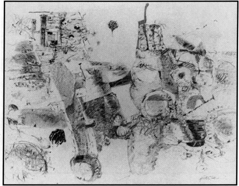
Figure 6. "Impression", drawing, 40"x32"
Figure 7. "Expressions", drawing, 40"x32"
It is in the nature of this work that interpretation
can only be taken so far. Pappas has long described his work in terms of
an "innerspace continuum," a reference to its interiority, its spontaneous
generation at the behest of something deep within responding to stimuli.
Many artists edit away the detritus and the incidental and focus their
vision on a specific form-type or technical mastery or genre, but in James
Pappas's work he functions as a conductor of ideas and impulses that flow
through and are shaped and orchestrated by his inner being, and it is up
to you to enter into that flow.
 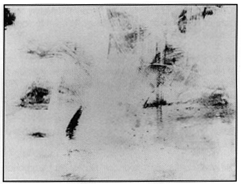
Figure 8. "Symphony in Black", screen painting,
39"x49"
Figure 9. "Meditations", screen painting, 49"x38"
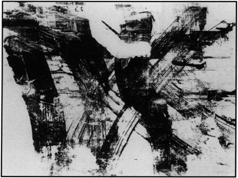 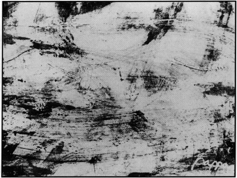
Figure 10. "Space is the Place", screen painting,
49"x38"
Figure 11. "Blue Trane", screen painting, 49"x38"
Biographical Note
James Pappas was born in Syracuse, N.Y.
on April 20, 1937. He began studying art at Madison High School in Rochester,
New York. He won scholarships to the Rochester Memorial Art Gallery and
Rochester Institute of Technology for development classes in 1955-56. Upon
graduation from Madison he went to St. Augustine's College in Raliegh,
North Carolina, in 1959 on an athletic scholarship, where he studied under
visiting Professor Emeritus, and nationally known artist and author James
Herring, from Howard University. Pappas continued his undergraduate and
graduate work at the State University of New York at Buffalo Albright Art
School where he received his Master of Fine Arts Degree in painting in
1974.
After graduation Pappas took a position as a parole
worker for the state of New York. He then went on to teach at the University
of Buffalo in the departments of Art and Black Studies. He became Chair
of the latter in 1977 where he remained for thirteen years as its head.
He also became Head Master of Black Mountain College II, a collegiate unit
offering visual and performing Arts programs for the general student population
at SUNY Buffalo. At the same time he was Co-founder and Director (with
his fellow artists Allie Anderson, Clarence Scott and Wilhelmena Godfrey)
of the Langston Hughes Center for the Visual and Performing Arts in Buffalo's
Inner City.
As part of his many contributions to the arts,
Pappas has consulted on a large number of projects and has played an important
role in furthering the arts in New York State while being appointed to
numerous boards and committees, including the City of Buffalo Arts Commission,
New York State Council on the Arts, County of Erie Arts in Public Places
Board, the Niagara Frontier Airport Art Selection Committee, Burchfield-Penny
Art Center, and the CEPA Gallery.
His art work has been exhibited in the United
States, Canada, and Europe. He has also received many awards for his work
and community service.
Pappas is currently on the faculty as an associate
professor at the University at Buffalo, State University of New York. He
has had over 50 exhibitions and lectured widely in the field of Applied
Media Aesthetics where he specializes in Black Cinema studies. His latest
project involves collaborating with saxophonists Rey Scott in a multidisiplinary
work.
Commentary and biography by Jack Quinan
Jack Quinan is Professor and Chair of the Department
of Art History at the State University of New York at Buffalo, Buffalo,
New York. He is also author of Frank Lloyd Wright's Larkin Building: Myth
and Fact.
Artist's Statement:
These works are an extension of an ongoing execution
of drawings, prints and paintings called Inner Space Continuum: "The Next
Generation." These compositions are a culmination of approximately eight
months work. They represent a new direction in the conceptual framework
of the spatial relationships drawn from previous work that have continuously
shifted and changed with the passing of time. I have extended the ideas
of time and space by "improvising" on themes and motifs referenced by various
sources of inspiration. These current works are called Spacescapes "The
designed and structured surface of a picture" - Wesbster's Dictionary -
an identifiable location that transmits time through a continuum of endless
motion. These works are internalized electric energy (impulses) that are
transmitted through a set of neurons in the brain externally represented
by gestures on a fixed plane.
The source of my work comes from the discovery
of everyday matter in our universe. Drips of running water on a car window
when the interior heat meets the external cold to form a pattern on the
glass, the sun shining on a piece of metal reflecting a broken edge so
brilliant that it likens to a form in itself; a rusted steel shape from
a damaged automobile as a result of the constant corrosive action of natures
elements; the erosion of deeply etched earth forms from years of weathering
action; of a billboard shredded of its layered descriptions forming shapes
with abrupt endings and sharply defined beginnings. The war between nature
and technology. I explore these observances to form a visual opinion of
shapes and images which are redefined by human and natural reordering.
I explore the concept of spatial relationships peculiar to my sense of
vision. Thus the term Spacescapes.
For me, "making art" is like an adventure in time
and space. What I am trying to express may be alien to your eye, but it
is the soul that I am trying to reach. Like a song or a sound it will cause
you to listen, and urge you to renew the experience. It might even cause
a disturbance. With this fleeting moment you have made a connection. There
is no beginning or end. That space in between sound and its order or disorder
is what is being articulated in a visual space.
I accept the idea that art is a mirror reflection
of all living matter. That includes everything known to humanity and beyond;
the forces of the "Black Hole."
To give a title to a work prompts the viewer to
look for its representation. The titles of my work are more deeply imbedded
in the ritual of making these images, therefore it is important to rely
on your own experience to establish a conversation. The various works offer
a plethora of opportunities to probe the text and read it as a novel. Experience
the linkages of interrelated statements being made by color, shape, form,
line and mass, as well as the continuum of repeated references from one
work to another. The medium guides the inertia of each set of works. The
screened images are immediate and unrelenting in their broad sweeping statements.
The drawings are impulsive, and gestural, while at the same time tediously
rendered. The paintings prompt a more sensual connection.
The idea of time is an elusive concept. It is
neither here nor there; it is not constant; it continuously moves; from
the past through the present and on to the future. We only understand it
in terms of our brush with it. Too early, on time, and too late. These
are artificial constructions of western dominance. These images act on
an elusive time sequence. The arrangement of the forms and their relative
modulations in space determine their speed; slow motioning the elements
of film construction in deconstructed narrative; or free form fragments.
All these are ways in which to define my sense of rhythm and space. I also
employ an assemblage of statements using parallel editing, cross cutting
and asymmetries.
From the experience of teaching cinema, I derive
a fascination with the tools and techniques of the filmmaker. I also draw
upon many years of listening to "Black Classical Music" or so called Jazz.
From this I draw upon the improvisational attributes of the music to perform
riffs, solos, ensembles, and composed orchestrations.

Figure 12. "Spacescapes", screen print, 49"x41.5"
Looking at these works requires a reading of every
line and image to comprehend the secrets that become apparent once they
are engaged. Careful, you might see what your minds eye tells you to see.
Artist's Other Exhibitions
"African Roots in the Western Hemisphere" SUNY
Geneseo, Geneseo, N.Y. February 5-25, 1995 Group Exhibition
Center Collection Exhibition, Burchfield-Penney
Art Center, April 1994
"Jim Pappas/Jack white, Introspective/Retrospective"
Exhibition, Community Folk Art Gallery, Syracuse University,
Syracuse, N.Y. Feb. 28-May 22,1994
"Black on Black" 12 rms Gallery Syracuse, N.Y.
January 9-February 20, 1993
"Five African American Artists", Ikenga Gallery,
February 5-March 3, 1993 Buffalo, N.Y.
"M&T Bank Collection" Exhibition Burchfield
Arts Center, 1990-91 acquisitions, Buffalo, N.Y. June 14-July 12, 1992
"An After Noon of Art and Jazz" Solo Exhibition,
with Rey Scott & Friends, Wythe Gallery, Chautauqua Arts Institution,
Chautauqua, N.Y. Aug., 11-25, 1991
"Jim Pappas - New Works on Paper" Solo Exhibition,
Keuka College, Keuka Park, N.Y. July 15-August 5, 1991
"Charles Rand Penny Collection", Barbara Schuller
Gallery, Buffalo, N.Y. June 7-28, 1991
"Five Contemporary African American Artists" sponsored
by the Links Inc. Buffalo Chapter 40th anniversary, Theodore Roosevelt
Inaugural Site, Buffalo, N.Y. April 28-May 27, 1991
"Music at an Exhibition-Works Based on a Theme
Relative to Musical Construction". Amherst Saxophone Quartet, Group Exhibition,
Burchfield Center, February 24-March 12, 1991
"Contemporary Art of The African Diaspora" University
of the State of New York at Albany, Albany, N.Y. September 5-October 15,
1991
"In Our Own Voices: Contemporary African American
Artists of New York State", Bevier Gallery, Rochester Institute of Technology,
Rochester, N.Y. December 17-January 24, 1990-1991
"Jim Pappas/David McDonald" two man Exhibition,
Hartnett Gallery, Wilson Commons University of Rochester, Rochester, N.Y.
February 23-March 20, 1990
"Art Works North of the Tappan Zee" Gallery 320,
Metropolitan School of the Arts, Syracuse N.Y. invitational group Exhibition
January 29, March 11, 1989
"93rd Annual Exhibition", Buffalo Society of Artists
Chautauqua Art Association Gallery Juried show, Chautauqua, N.Y. July 31-August
27, 1988
"Innerspace Continuum Series" El Museo Francisco
Oller y Diego Riveria, Gallery, Solo Exhibition, Buffalo, N.Y. May 13-June
10, 1988
"65th Annual Spring Exhibition", Erie Art Museum,
Erie P.A. competitive group exhibition, April 24-June 12, 1988
"Works on Paper Jim Pappas", Adams Memorial Gallery,
Dunkirk, N.Y. solo exhibition, January 3-31, 1988
"Jim Pappas and Valeria Cray", Niagara Community
College, Sanborn, N.Y., Exhibition Gallery, 2 Person Exhibition", January
14-February 5, 1988
125 Years of Painting in Western New York 'Wayward
Muse' Albright Knox Art Gallery, Buffalo, N.Y. May 1987
"Rhythm-a-ning" Educational Opportunity Center,
Buffalo, N.Y. Commissioned work on canvas 60" x 120" (painting), permanent
installation, December 1986
"Works on Paper", Associated Arts Organization,
group exhibition, Buffalo, N.Y., February 1985
"Three Person Show", Artists Gallery, Buffalo,
N.Y. exhibition, February 198,
Albright-Knox Art Gallery, Members Gallery Loan
Program, 1984-85, 1990-91
"Jim Pappas", Colgate University, Hamilton, N.Y.,
solo exhibition Spring, 1983
(Mural project, Permanent Installation, A collaborative
work with Joseph Fisher, Western New York, Children's Psychiatric Center,
West Seneca, N.Y. Summer 1983)
"Jim Pappas/Jack White: Two Directions, New Directions',
Folk Art Gallery, Syracuse, N.Y., July-August 1982
"Jim Pappas", solo exhibition, Black Mountain
College II Gallery, State University of New York at Buffalo, April 1982
Associated Arts Organization invitational, Juried
group exhibition, Buffalo, N.Y. April 1982
Erie Community College, Buffalo, N.Y., invitational
group exhibition, January 1982
"Jim Pappas", Wells College, Aurora, N.Y., Solo
exhibition, April 1980
"Jim Pappas" Keuka College, Keuka Park, N.Y.,
Solo exhibition, February 1980
Erie Art Center, Erie, PA., Juried group exhibition
March 1979
Brockport State College, Brockport, N.Y. SUNY
Buffalo Faculty Art Exhibition, February 1979
State University College at Buffalo, Butler Library,
group exhibition Buffalo, N.Y. October, 1978
"Jim Pappas" Serigraphs, Artists Committee Gallery,
Solo Exhibition Buffalo, N.Y. September 1978
Idaho State University, Idaho City, Transition
Gallery, group exhibition, September 1978
Albright Knox Art Gallery, Buffalo, N.Y., group
exhibition, November 1977
Lawana Cultural Association, Watkins Glen, N.Y.
group exhibition, July 7-August 7, 1977
Massena Public Library, group exhibition, Massena,
N.Y., June 1-July 6, 1977
Rensselaer Polytechnic Institute, Troy, N.Y.,
Shellnut Gallery, Rensselaer Union, group exhibition, March 30-April 27,
1977
St. Thomas Aquinas College, Sparkhill, N.Y., group
exhibition, March 30-April 27, 1977
Albright Knox Art Gallery, Buffalo, N.Y., Western
New York exhibition, March 1977
Mohawk Valley Community College, Utica, N.Y. group
exhibition, February 1977
Lake Placid School of Art, Lake Placid, N.Y. group
exhibition, January 1977
State University of New York at Alfred, Alfred,
N.Y. group exhibition, October 1976
Kenan Center, Lockport, N.Y., group exhibition,
October 1976
New York State Fair Exhibition, Syracuse, N.Y.
Juried group exhibition, September 1976
Exposure 4: Eddie Davis, David McDonald, James
Pappas and Jack White. Memorial Art Gallery of the University of Rochester,
Rochester, N.Y. 1975
Art Faculty Exhibition Ridge Lea Gallery State
University of New York at Buffalo, Buffalo, NY 1974
Niagara University, Niagara Falls, N.Y. 1973
Patteran Artists Exhibition Burchfield Center
State University College at Buffalo, 1972
16 Under 40 Saratoga Springs Center for the Performing
Arts, Saratoga Springs, N.Y., 1970
6 From the City Norton Hall Gallery, State University
of New York at Buffalo, Buffalo, N.Y., 1968
Foreign Exhibitions:
Hamilton Gallery, Hamilton, Ontario Canada, Invitational
group exhibition, February 1979
School of Art and Architecture, Charlottenborg,
Kobenhavn, Denmark, "Den Flexible" Invitational group exhibition, November
1977
Niagara Arts Council, Juried group exhibition,
Niagara Falls, Ontario, Canada, August 26-September 30, 1977
Sister City Exhibition, Juried group exhibition,
Dortmund, West Germany, November 1976.
"American Painters in Paris" Exhibition, Paris,
France International Juried group Exhibition December, 1975
There are several other exhibitions dating back
to 1968. Art works are also in both public and private collections.

|














